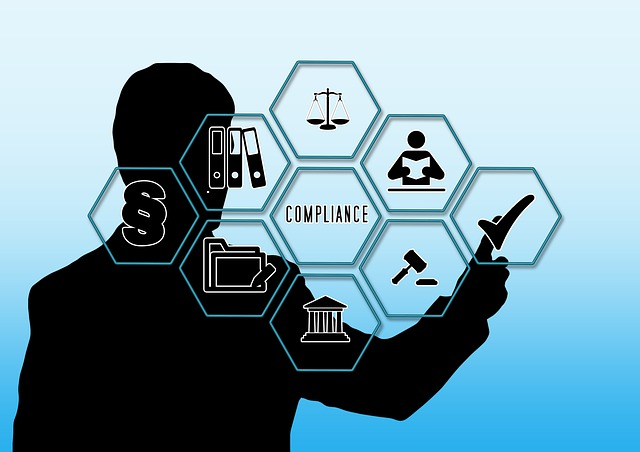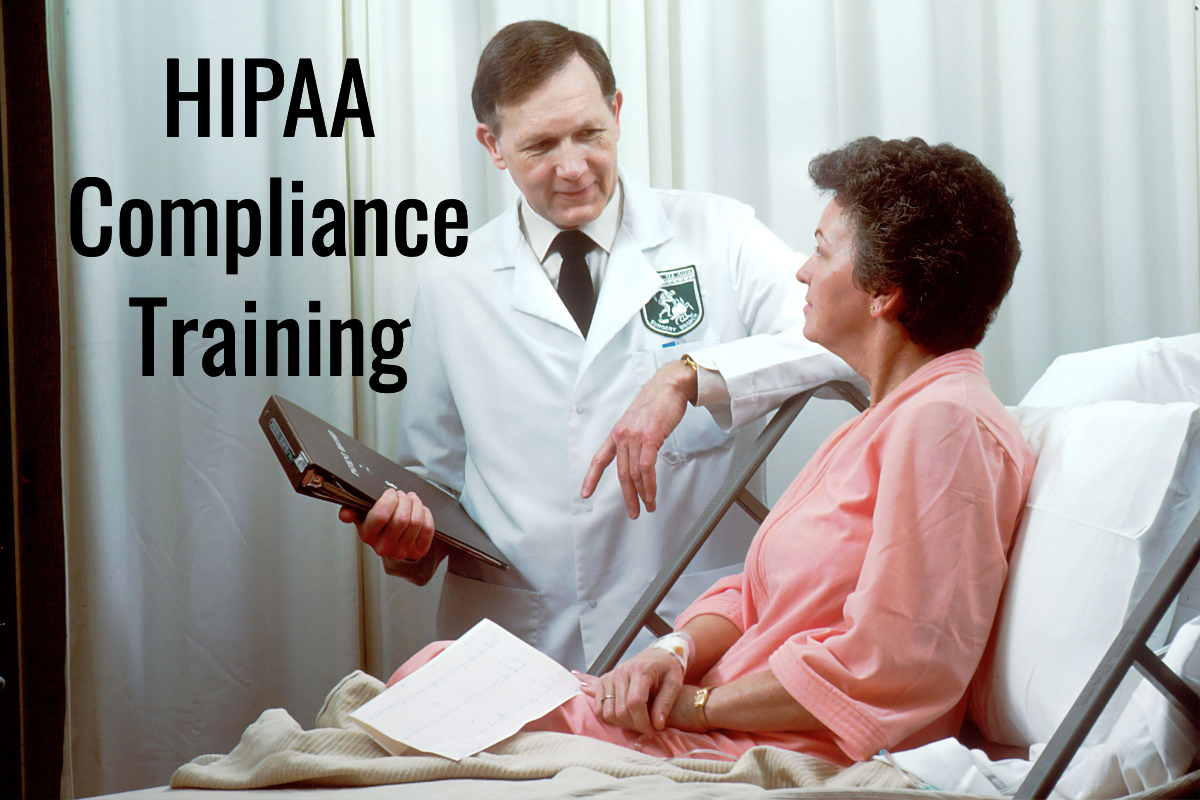HIPAA Training - What is Required for HIPAA Compliance?

All organizations that handle protected health information (PHI) must take steps to ensure that this information remains confidential. The Health Insurance Portability and Accountability Act (HIPAA) sets forth national standards for protecting PHI. In order to comply with HIPAA, organizations must develop and implement policies and procedures that safeguard PHI from unauthorized use or disclosure. They must also train their employees on how to handle PHI in a confidential manner.
What is HIPAA?
The Health Insurance Portability and Accountability Act (HIPAA) is a federal law that establishes national standards for protecting the confidentiality of protected health information (PHI). HIPAA applies to all organizations that handle PHI, including hospitals, clinics, insurance companies, and employers.
The History of HIPAA:
HIPAA was enacted in 1996 in response to the increased use of electronic health records (EHRs). At the time, there was concern that the confidential information contained in EHRs could be accessed by unauthorized individuals. In order to protect the confidentiality of PHI, Congress passed HIPAA.
HIPAA Compliance:
Organizations that handle PHI must take steps to ensure that PHI is protected from unauthorized access, use, or disclosure. These steps include developing policies and procedures to safeguard PHI, training employees on how to handle PHI, and patient education. Covered entities must also comply with the requirements of the HIPAA Privacy Rule, the HIPAA Security Rule, the HIPAA Enforcement Rule, and the HIPAA Breach Notification Rule.
Who Must Comply with HIPAA?
All organizations that handle PHI must comply with HIPAA. This includes covered entities, business associates, and subcontractors.
Covered Entities:
A covered entity is any organization that handles PHI. Covered entities include hospitals, clinics, insurance companies, and employers. Business Associates:
A business associate is any organization that provides services to a covered entity and has access to PHI. Business associates include third-party billing companies, transcription services, and vendors. Subcontractors:
A subcontractor is an organization that provides services to a business associate and has access to PHI. Subcontractors include data storage companies and cloud service providers.
Penalties for Noncompliance:
Organizations that violate HIPAA may be subject to civil and criminal penalties. Civil penalties can range from $100 to $50,000 per violation, with a maximum of $1.5 million per year. Criminal penalties can include imprisonment of up to 10 years and fines of up to $250,000.

How to Achieve Compliance:
There are four steps that organizations must take in order to comply with HIPAA: develop policies and procedures, implement physical, technical, and administrative safeguards, train employees on how to handle PHI, and provide patients with access to their own PHI.
Developing Policies and Procedures:
The first step in compliance is to develop policies and procedures that safeguard PHI from unauthorized use or disclosure. These policies and procedures should be designed to meet the specific needs of the organization. Implementing Physical, Technical, and Administrative Safeguards:
Physical safeguards are measures taken to protect PHI from unauthorized access, use, or disclosure. Examples of physical safeguards include locked doors and security cameras. Technical safeguards are measures taken to protect PHI from unauthorized access, use, or disclosure. Examples of technical safeguards include firewalls and data encryption. Administrative safeguards are measures taken to protect PHI from unauthorized access, use, or disclosure. Examples of administrative safeguards include employee training and patient education. Employee Training:
All employees who have access to PHI must be trained on how to handle it in a confidential manner. Employee training should include information on the policies and procedures that have been developed to safeguard PHI. Patient Education:
Patients should be educated on their rights under HIPAA and how to protect their own PHI. Patients should also be made aware of the policies and procedures that have been put in place to safeguard their PHI.
The Health Insurance Portability and Accountability Act (HIPAA) is a federal law that establishes national standards for protecting the confidentiality of protected health information (PHI). HIPAA applies to all organizations that handle PHI, including covered entities, business associates, and subcontractors. Covered entities include hospitals, clinics, insurance companies, and employers.

HIPAA Regulations:
The HIPAA Privacy Rule:
The Privacy Rule sets national standards for the protection of PHI. The Privacy Rule requires covered entities to develop policies and procedures to safeguard PHI from unauthorized use or disclosure. The Privacy Rule also requires covered entities to train employees on how to handle PHI in a confidential manner. The Privacy Rule applies to all forms of PHI, including paper records, electronic records, and oral communications.
The HIPAA Security Rule:
The Security Rule establishes national standards for the security of electronic PHI. The Security Rule requires covered entities to implement physical, technical, and administrative safeguards to protect PHI from unauthorized access, use, or disclosure. The Security Rule also requires covered entities to train employees on how to handle PHI in a confidential manner. The Security Rule applies to electronic PHI only.
The HIPAA Enforcement Rule:
The Enforcement Rule sets forth the penalties that may be imposed on covered entities and business associates for violating HIPAA. The Enforcement Rule also establishes procedures for investigating complaints of HIPAA violations.
The HIPAA Breach Notification Rule:
The Breach Notification Rule requires covered entities to notify patients of any unauthorized access, use, or disclosure of their PHI. The Breach Notification Rule also requires covered entities to notify the Department of Health and Human Services of any breach that affects more than 500 patients.

Glossary:
Hipaa training: A process of learning the policies and procedures related to the Health Insurance Portability and Accountability Act (HIPAA).
Covered entity: An organization that is required to comply with HIPAA. Covered entities include hospitals, clinics, insurance companies, and employers.
Business associate: An organization that provides services to a covered entity and has access to PHI. Business associates include third-party billing companies, transcription services, and IT providers.
Subcontractor: A business associate of a business associate. Subcontractors are not directly subject to HIPAA, but they must comply with the requirements of their business associate agreement.
Protected health information (PHI): Any information that can be used to identify an individual and that is related to the individual's health or healthcare. PHI includes, but is not limited to, names, addresses, dates of birth, Social Security numbers, medical records, and insurance information.
Privacy Rule: The section of HIPAA that establishes national standards for the protection of PHI. The Privacy Rule requires covered entities to develop policies and procedures to safeguard PHI from unauthorized use or disclosure.
Security Rules: The section of HIPAA that establishes national standards for the security of electronic PHI. The Security Rule requires covered entities to implement physical, technical, and administrative safeguards to protect PHI from unauthorized access, use, or disclosure.
Hipaa compliance space: The Health Insurance Portability and Accountability Act (HIPAA) is a federal law that establishes national standards for the protection of protected health information (PHI). HIPAA applies to all organizations that handle PHI, including covered entities, business associates, and subcontractors. Covered entities include hospitals, clinics, insurance companies, and employers.
Hipaa compliant: A term used to describe an organization or individual that complies with the Health Insurance Portability and Accountability Act (HIPAA).
Penalties: The fines and other sanctions that may be imposed on covered entities and business associates for violating HIPAA.
Investigation: The process of looking into a complaint of a HIPAA violation. Investigations are conducted by the Office for Civil Rights, the enforcement arm of HIPAA
Complaint: A report of a possible HIPAA violation. Complaints can be filed with the Office for Civil Rights or with a covered entity's internal complaints process.
Hipaa certification: A credential that demonstrates an individual's knowledge of HIPAA and the ability to apply it to real-world situations. There is no official Hipaa certification, but there are many programs that offer training and exams that can lead to certification.
Hipaa training program: A course or series of courses that covers the Health Insurance Portability and Accountability Act (HIPAA) and its requirements. Hipaa training programs are offered by many organizations, including covered entities, business associates, and third-party vendors.
Security and privacy provisions: The sections of HIPAA that establish the security and privacy requirements for covered entities and business associates. The security and privacy provisions are located in Title II of HIPAA.
Breach: A unauthorized disclosure of protected health information (PHI). A breach can occur when PHI is accessed without authorization, when PHI is used for an unauthorized purpose, or when PHI is disclosed to an unauthorized party.
Notification: The process of informing individuals who have been affected by a data breach. Notification must be made in accordance with the Breach Notification Rule, which is part of the HIPAA Omnibus Rule.
Hipaa violation: A failure to comply with the requirements of HIPAA. Violations can result in civil and criminal penalties.
Civil penalties: The fines that may be imposed on covered entities and business associates for violating HIPAA. Civil penalties are assessed by the Office for Civil Rights, the enforcement arm of HIPAA.
Breach notification rules: The section of the HIPAA Omnibus Rule that requires covered entities and business associates to notify individuals of a data breach. The Breach Notification Rule is located in Title II of the Omnibus Rule.
Criminal penalties: The jail time and fines that may be imposed on covered entities and business associates for violating HIPAA. Criminal penalties are assessed by the Department of Justice, the enforcement arm of HIPAA.
HIPAA Omnibus Rule: A rule that modifies HIPAA to reflect the changes made by the HITECH Act. The Omnibus Rule is located in Title II of HIPAA.
HITECH Act: The Health Information Technology for Economic and Clinical Health Act, a law that amended HIPAA to strengthen the privacy and security protections for protected health information (PHI). The HITECH Act is located in Title XIII of the American Recovery and Reinvestment Act of 2009.
American Recovery and Reinvestment Act of 2009: A law that appropriated funds for the stimulus package known as the American Recovery and Reinvestment Act of 2009. The Recovery Act is located in Title XIII of the American Recovery and Reinvestment Act of 2009.
Healthcare industry: The businesses and organizations that provide healthcare services, products, and information. The healthcare industry includes hospitals, clinics, laboratories, pharmacies, and other providers of healthcare services.
HIPAA transaction: A data transaction that is covered by HIPAA. Transactions include claims and encounters, eligibility requests and responses, referrals and authorizations, and other data exchanges between covered entities and business associates.
HIPAA transaction standard: A standard that defines the format of HIPAA transactions. The transaction standard is located in Title II of HIPAA.
Clearinghouse: A business that processes HIPAA transactions on behalf of covered entities. Clearinghouses are required to comply with the transaction standards and other requirements of HIPAA.
EDI: Electronic Data Interchange, the process of exchanging electronic data between businesses. EDI is used to exchange HIPAA transactions between covered entities and business associates.
ASC X12N: The Accredited Standards Committee that develops and maintains the transaction standards for HIPAA. ASC X12N is located in Title II of HIPAA.
NCPDP: The National Council for Prescription Drug Programs, the organization that develops and maintains the transaction standards for pharmacy claims. NCPDP is located in Title II of HIPAA.
ANSI: The American National Standards Institute, the organization that accredits standards development organizations like ASC X12N and NCPDP. ANSI is located in Title II of HIPAA.
CMS: The Centers for Medicare and Medicaid Services, the federal agency that administers the Medicare and Medicaid programs. CMS is located in Title XVIII of the Social Security Act.
Hipaa certificate: A certificate that is awarded to individuals who successfully complete a HIPAA training program. Hipaa certificates are awarded by HIPAA training providers.
HIPAA Online Training Course
Course overview:
This Hipaa awareness training program will provide you with an understanding of the Health Insurance Portability and Accountability Act (HIPAA) and the rules that govern it. The course will cover topics such as the background of HIPAA, the covered entities under HIPAA, the covered transactions, and more.
By the end of this program, you will be able to:
- Understand the history and purpose of HIPAA
- Explain who is considered a covered entity under HIPAA
- Discuss what transactions are considered covered transactions under HIPAA
- Understand how the Privacy Rule and Security Rule work together to protect patient information
- Describe how violations of HIPAA can lead to civil and criminal penalties.
HIPAA Compliance Training Outline:
Module 1: Introduction to HIPAA
- What is HIPAA?
- The history of HIPAA
- The purpose of HIPAA
Module 2: Covered Entities and Transactions
- Who is considered a covered entity under HIPAA?
- What transactions are considered covered transactions under HIPAA?
- The different types of patient information that are protected by HIPAA
Module 3: The Privacy Rule and Security Rule
- How the Privacy Rule and Security Rule work together to protect patient information Explain what the Privacy Rule covers Discuss what the Security Rule covers Describe how violation of either rule can lead to civil or criminal penalties.
Module 4: Enforcement and Penalties
- How HIPAA violations are enforced
- The civil and criminal penalties for violating HIPAA rules.
Module 5: Summary and Conclusion
- Review of key concepts learned in the course How to apply what you've learned to real-world scenarios.
Who should take this course?
The following people should take this course:
- Covered entities and their employees: This includes doctors, hospitals, clinics, nursing homes, pharmacies, insurance companies, and any other health care provider that transmits protected health information electronically.
- Business associates: These are people or organizations that provide services to covered entities and have access to protected health information. Examples include billing companies, transcriptionists, and IT consultants.
- Anyone else who wants to learn about HIPAA: This includes patients, family members, and the general public.
This program is designed for anyone who needs to learn about HIPAA, including covered entities and their employees, healthcare workers, as well as business associates. The course is self-paced and can be completed in one sitting or over a period of time. There is no time limit to complete the program.
How long does the course take to complete?
This is a self-paced online training, so you can complete it in one sitting or over a period of time. There is no time limit to finish the program.




